Related Research Articles
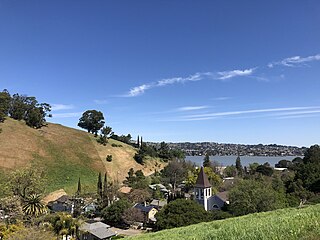
Port Costa is a small village and census-designated place (CDP) in Contra Costa County, California, located in East Bay region of the San Francisco Bay Area. Situated on the southern shore of the Carquinez Strait, the population was 190 at the 2010 census.
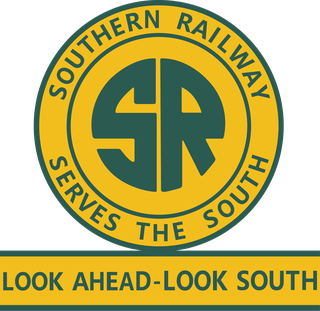
The Southern Railway was a class 1 railroad based in the Southern United States between 1894 and 1982, when it merged with the Norfolk & Western to form Norfolk Southern. The railroad was the product of nearly 150 predecessor lines that were combined, reorganized and recombined beginning in the 1830s, formally becoming the Southern Railway in 1894.

Toronto Harbour or Toronto Bay is a bay on the north shore of Lake Ontario, in Toronto, Ontario, Canada. It is a natural harbour, protected from Lake Ontario waves by the Toronto Islands. Today, the harbour is used primarily for recreational boating, including personal vessels and pleasure boats providing scenic or party cruises. Ferries travel from docks on the mainland to the Islands, and cargo ships deliver aggregates and raw sugar to industries located in the harbour. Historically, the harbour has been used for military vessels, passenger traffic and cargo traffic. Waterfront uses include residential, recreational, cultural, commercial and industrial sites.
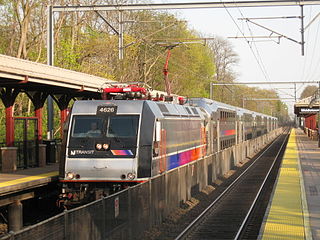
The North Jersey Coast Line is a commuter rail line running from Rahway to Bay Head, New Jersey, traversing through the Jersey Shore region. Operated by New Jersey Transit, the line is electrified as far south as Long Branch. On rail system maps it is colored light blue, and its symbol is a sailboat. The line runs along the former New York & Long Branch Railroad, which was co-owned by the Central Railroad of New Jersey and the Pennsylvania Railroad.
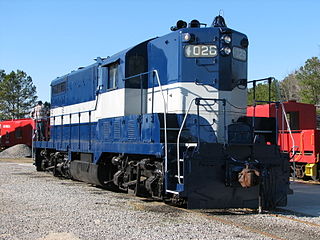
The Georgia Railroad and Banking Company also seen as "GARR", was a historic railroad and banking company that operated in the U.S. state of Georgia. In 1967 it reported 833 million revenue-ton-miles of freight and 3 million passenger-miles; at the end of the year it operated 331 miles (533 km) of road and 510 miles (820 km) of track.
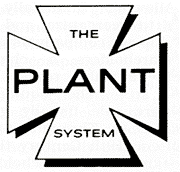
The Plant System named after its owner, Henry B. Plant, was a system of railroads and steamboats in the U.S. South, taken over by the Atlantic Coast Line Railroad in 1902. The original line of the system was the Savannah, Florida and Western Railway, running across southern Georgia. The Plant Investment Company was formed in 1882 to lease and buy other railroads and expand the system. Other major lines incorporated into the system include the Savannah and Charleston Railroad and the Brunswick and Western Railroad.
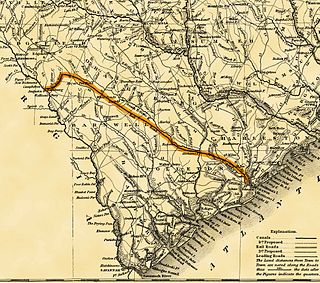
The South Carolina Canal and Rail Road Company was a railroad in South Carolina that operated independently from 1830 to 1844. One of the first railroads in North America to be chartered and constructed, it provided the first steam-powered, scheduled passenger train service in the United States.

The Port of San Francisco is a semi-independent organization that oversees the port facilities at San Francisco, California, United States. It is run by a five-member commission, appointed by the Mayor and approved by the Board of Supervisors. The Port is responsible for managing the larger waterfront area that extends from the anchorage of the Golden Gate Bridge, along the Marina district, all the way around the north and east shores of the city of San Francisco including Fisherman's Wharf and the Embarcadero, and southward to the city line just beyond Candlestick Point. In 1968 the State of California, via the California State Lands Commission for the State-operated San Francisco Port Authority, transferred its responsibilities for the Harbor of San Francisco waterfront to the City and County of San Francisco / San Francisco Harbor Commission through the Burton Act AB2649. All eligible State port authority employees had the option to become employees of the City and County of San Francisco to maintain consistent operation of the Port of San Francisco.

Memphis Union Station was a passenger terminal in Memphis, Tennessee. It served as a hub between railroads of the Southwest, the Missouri Pacific Railroad and the St. Louis Southwestern Railway, and railroads of the Southeast, the Louisville and Nashville Railroad, the Nashville, Chattanooga and St. Louis Railway and the Southern Railway. The terminal, completed in 1912, was built in the Beaux-Arts style and was located on Calhoun Street, between south Second Street and Rayburn Boulevard. It was demolished in 1969. This location in south Memphis was approximately two blocks east of the other major Memphis railroad terminal, Memphis Grand Central Station.

George Washington Adair was a real-estate developer in post Civil War Atlanta.

Hoboken Shore Railroad, initials HSRR, was a New Jersey railroad which was created around 1954. It took over the activities of the Hoboken Manufacturers Railroad, initials HMRR. This railroad owned only 0.221 miles (0.356 km) of mainline but leased about 1906 the longer route of the Hoboken Shore Road operated since 1897 by the Hoboken Railroad Warehouse and Steamship Connecting Company, initials HRRWH&SSConCo or HRRW&SSCCO.
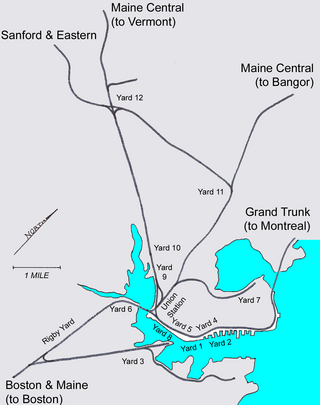
The Portland Terminal Company was a terminal railroad notable for its control of switching (shunting) activity for the Maine Central Railroad (MEC) and Boston & Maine (B&M) railroads in the Maine cities of Portland, South Portland, and Westbrook.

Samuel Martin Inman was a prominent cotton merchant and businessman in Atlanta, Georgia, who is best known for the neighborhood in Atlanta that bears his name. Inman is also commemorated in the name of the Samuel M. Inman Middle School in the Virginia-Highland neighborhood.

The Central Waterfront of Seattle, Washington, United States, is the most urbanized portion of the Elliott Bay shore. It runs from the Pioneer Square shore roughly northwest past Downtown Seattle and Belltown, ending at the Broad Street site of the Olympic Sculpture Park.
The Charleston Terminal Company was a transportation company that operated along the Charleston, South Carolina, waterfront in the early part of the 20th century.

The Edgewater Branch was a branch of the New York, Susquehanna and Western Railway (NYS&W) that ran about 3.174 miles (5.108 km) through eastern Bergen County, New Jersey in the United States. Starting from a rail junction at the Little Ferry Yard, it went east through the Edgewater Tunnel to Undercliff to the Hudson Waterfront.
The Southern League was a Class B and Class C minor league baseball league which operated intermittently in the Southern United States from 1885 to 1899. Financial problems plagued the league and its member teams throughout their existence. It was not unusual for teams to depart the league during the season or for the league to cease operations without completing the season. It was this lack of financial support which ultimately caused the league to permanently disband in 1889. In 1901, a new league, called the Southern Association, was created from its remnants.
Chattanooga Union Station, more commonly known as the Union Depot in Chattanooga, constructed between 1857-1859, served as a train car shed in Chattanooga, Tennessee. Located at Broad and Ninth Streets, the station was one of two major railroad terminals in the city, the other being the Southern Railway's Terminal Station.

The Kanawha Bridge is an abandoned railway bridge over the Kanawha River in Charleston, West Virginia. The bridge is of a Parker through-truss design. The bridge is located east of the Patrick Street Bridge and is now named the "Travis L. Castle Railroad Trestle."
References
- ↑ Poor's Manual of the Railroads of the United States, Henry Poor, 1894, page 172
- ↑ New Men, New Cities, New South: Atlanta, Nashville, Charleston, Mobile, 1860-1910, Don H. Doyle, page 163
- ↑ New Men, New Cities, New South: Atlanta, Nashville, Charleston, Mobile, 1860-1910, Don H. Doyle, page 163
- ↑ Losses by Fire, "New York Times", January 8, 1893
- ↑ Railroad Men and Matters, New York Times, January 15, 1896
- ↑ The Financial Review, 1898, page 55
- ↑ The Railway Age, Volume 38, 1904, page 538